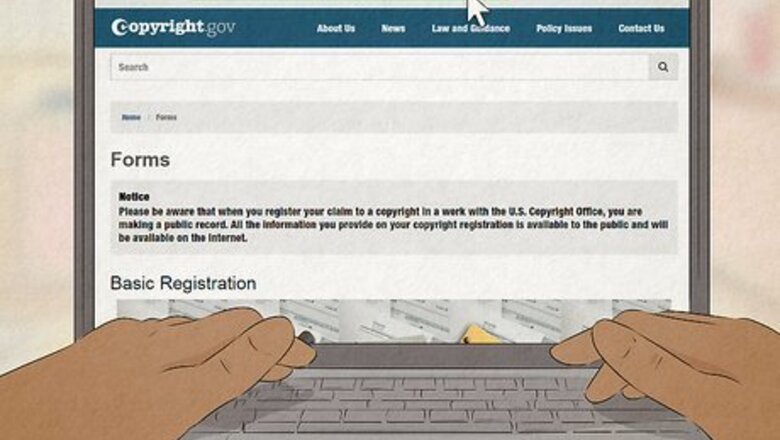
views
X
Trustworthy Source
United States Copyright Office
Part of the Library of Congress, responsible for maintaining copyright records
Go to source
Even if you don't register your copyright, you still have to deposit 2 copies of any work published or distributed in the US with the Library of Congress within 3 months of the date the work becomes available.[2]
X
Trustworthy Source
United States Copyright Office
Part of the Library of Congress, responsible for maintaining copyright records
Go to source
Completing Your Application
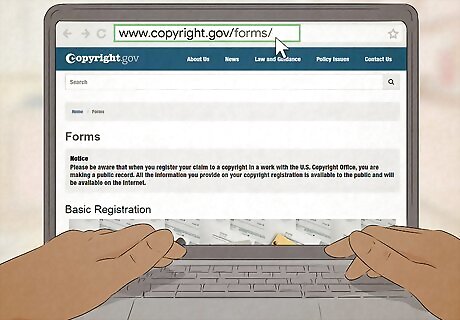
Visit the Copyright Office website to start the application process. Go to https://www.copyright.gov/forms/ to access the forms you'll need. You can either apply online or print the forms and fill them out by hand to mail them in. The website also has guidance and answers to frequently asked questions that can help you with the process if you get stuck. If there are specific warnings or notices related to copyright registration, they'll appear at the top of the page. For example, the Copyright Office has changed some procedures in response to the COVID-19 pandemic that you'll probably want to read about before you get started.
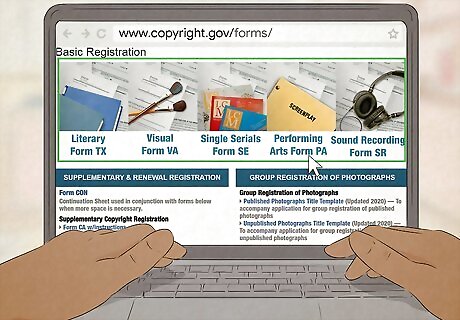
Choose the application that matches the type of work you've created. The Copyright Office has different forms depending on the type of work you've created. Although they all require you to provide the same basic information, it's important to use the right one for classification purposes. There are 6 basic types of registration forms: Literary: for fiction or nonfiction books, poetry, computer programs, and other written work of a non-dramatic nature Visual: for photographs, graphic designs, paintings, drawings, sculptures, and other works of art. Note that there's a separate form to use if you're registering a group of related photographs. Serials: for magazines, journals, and other publications with multiple issues over the course of a year Performing arts: for screenplays and scripts, choreography, or musical compositions (with or without lyrics) Sound recording: for audio recordings, including music and audiobooks or other broadcasts. With this application, you can register both the recording itself and the underlying work that was recorded. Motion picture or audiovisual: for films, television shows, videos, video games, and other works that include both visual and audio components that are synced together.
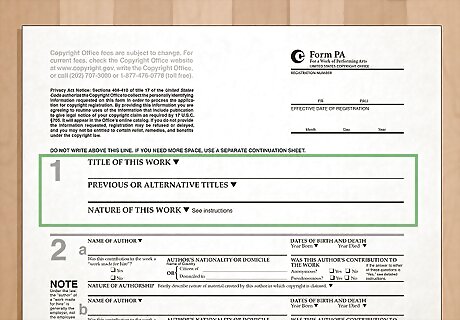
Provide information about the work. The first section of the application asks for the title of your work. Every work that is registered for copyright has to have a title. If your work is untitled, a few words to describe it will do, such as "untitled painting of owls." In later sections of the application, provide the date the work was created and the date it was published. These are often 2 different dates. For example, you might've written your novel on December 18, 2018, but it wasn't published until March 18, 2020. If it took you several months (or even years) to create your work, go with the earliest date that the work was complete in some form, such as the date you finished your first draft.
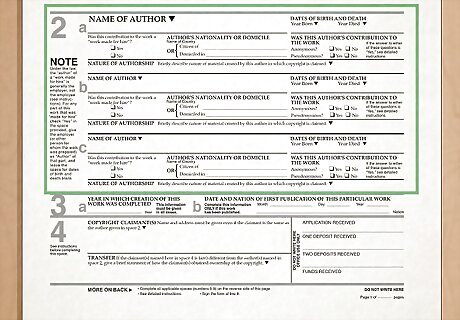
List the author of the work. If you created the work, you're the author, regardless of the type of work it is. However, if you created the work for someone else, it might be considered a "work for hire," in which case they would be listed as the author. For example, suppose you wrote a series of blog posts for Cady's Cupcakes, a local bakery. The contract you signed specifies that you created the blog posts as a work for hire and don't retain rights to the content. On a copyright application, the author would be Cady's Cupcakes. You can choose to be anonymous or pseudonymous. There's a box to check to indicate that. You can also list both your pseudonym and your real name. For example, you might identify yourself as "Sally Sunshine, whose pseudonym is Sage Tartley." Regardless of how you identify yourself, you must include the name of your country of citizenship and where you currently live.
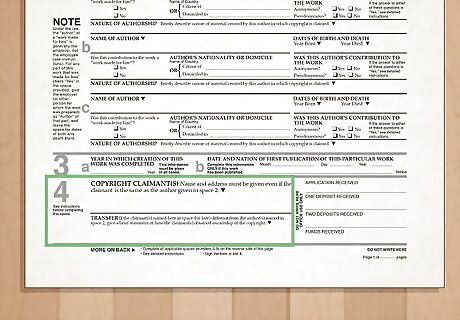
Include information about the copyright claimant. If you created the work yourself, this section is just a repeat of the information you provided for the author. However, authors can also transfer their copyright in a work to someone else, in which case, the claimant would be different from the author. For example, suppose your aunt wrote a novel. When she died, she left the copyright for that novel to you in her will. She would be the author of the novel, but you would be the claimant. You need some written evidence that the author transferred all rights in the work to you, such as a will or a contract. You don't need to submit a copy of it with your application, but you will need it if you ever sue someone for infringement and they question if you have a valid copyright claim.
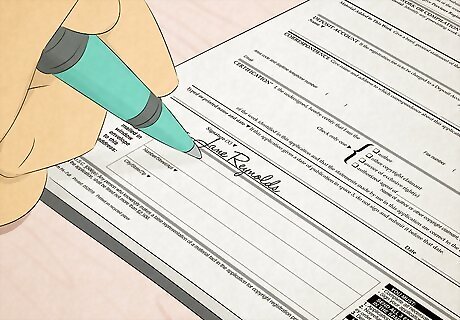
Sign and date your application. Check one of the boxes that identifies who you are ("author," if you created the work) and sign the application. Underneath your signature, there's a space for you to legibly print your name and add the date your application was signed. Be sure to provide an address for the Copyright Office to use to mail your certificate when it's ready.
Submitting Your Application
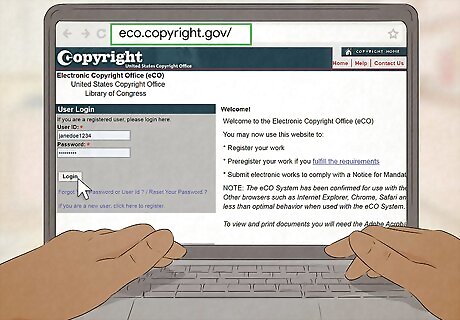
Set up an account on the eCO website. At https://eco.copyright.gov/ you can create a user account that will allow you to submit your registration application online. You can use this account to submit multiple applications if you create things regularly. Once you've set up your account, choose the correct type of application and enter your application information.

Pay the registration fees. If you're submitting your application online, you can pay your fees using a major credit or debit card, or by ACH debit from a US bank account. For mailed applications, include a check or money order payable to "U.S. Copyright Office." Registration fees change every year. Effective March 20, 2020, registration fees are: $45 for an online application to register copyright in 1 work with 1 author/claimant that is not a work for hire $65 for all other online applications $125 for mail-in applications
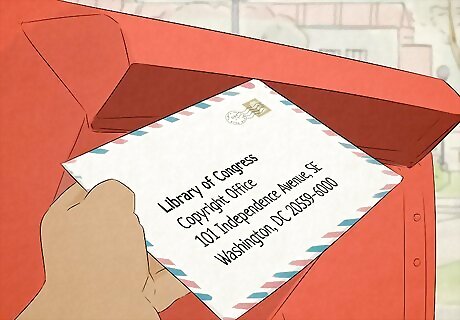
Mail your application if you filled out a paper application. Send your completed application form, registration fee, and a copy of your work together in the same package. Use certified mail with return receipt requested if you want a record of when the Copyright Office receives your application. Send your package to the following address: Library of CongressCopyright Office101 Independence Avenue, SEWashington, DC 20559-6000 The address is the same for all applications. However, add the two-letter abbreviation that identifies your application type after the words "Copyright Office." Use TX for literary works, SE for serials, VA for visual arts, PA for performing arts, SR for sound recordings, and MP for motion pictures and audiovisual works. This abbreviation also appears at the top of your application.
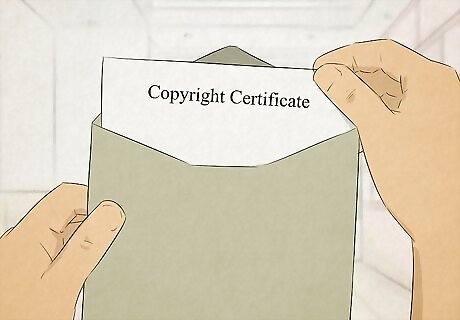
Wait to receive your certificate in the mail. Once the copyright office processes your application it will send an official certificate to the address you provided on your application. Keep this certificate in a safe place. The processing time varies depending on the time of year and how busy the Copyright Office is. As of September 2020, electronic applications have a wait time of between 2 and 3 months, on average. Mailed applications have a wait time of between 8 and 9 months.
Depositing Copies with the Library of Congress
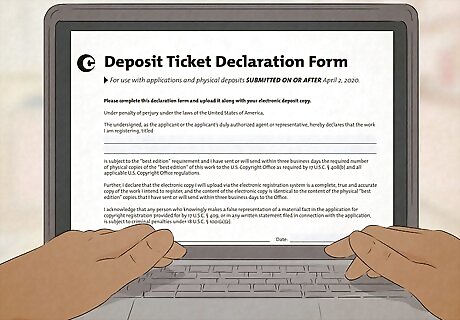
Submit digital copies if the work was only published in electronic form. If there are print copies of your work available, you must send a print copy. However, if you only published your work online or in an electronic format, you can submit a digital copy to the Library of Congress. If your work was only published online or in digital format and you don't want to register your copyright, you're still responsible for sending a physical copy of the work to the Library of Congress: for example, by downloading it and submitting a physical copy of the media file. Note that during the COVID-19 pandemic, the Copyright Office is strongly encouraging you to provide electronic deposits whenever possible. If you're ordinarily required to submit a physical deposit, do both. Complete the form, available for download at https://www.copyright.gov/coronavirus/declaration-form.pdf, to certify that the electronic and physical deposits contain the same material.
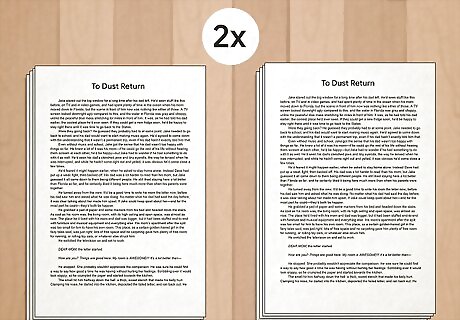
Get 2 complete copies of the work you created. For most categories of work, including books and sound recordings, the Library of Congress requires 2 complete copies. By "complete," they mean all elements of the work included in the publication. For example, if you were depositing a sound recording, it would be considered complete if it also included any cover art, liner notes, inserts, and other materials included in the sound recording as it's offered for retail sale. For some types of work, such as motion pictures or musical compositions, you only need to send 1 copy. If your work is a limited edition (or one-of-a-kind) work of visual art, you can send a representation of it, such as a photograph.
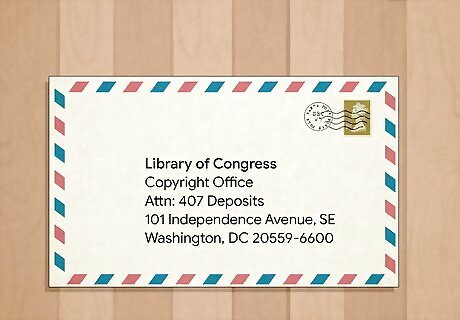
Mail your copies to the Library of Congress. Your deposit copies must be sent within 3 months of the date of publication in the US. You can use certified mail with return receipt requested if you want official notice when your deposit is received. Send your package to the following address: Library of CongressCopyright OfficeAttn: 407 Deposits101 Independence Avenue, SEWashington, DC 20559-6600


















Comments
0 comment